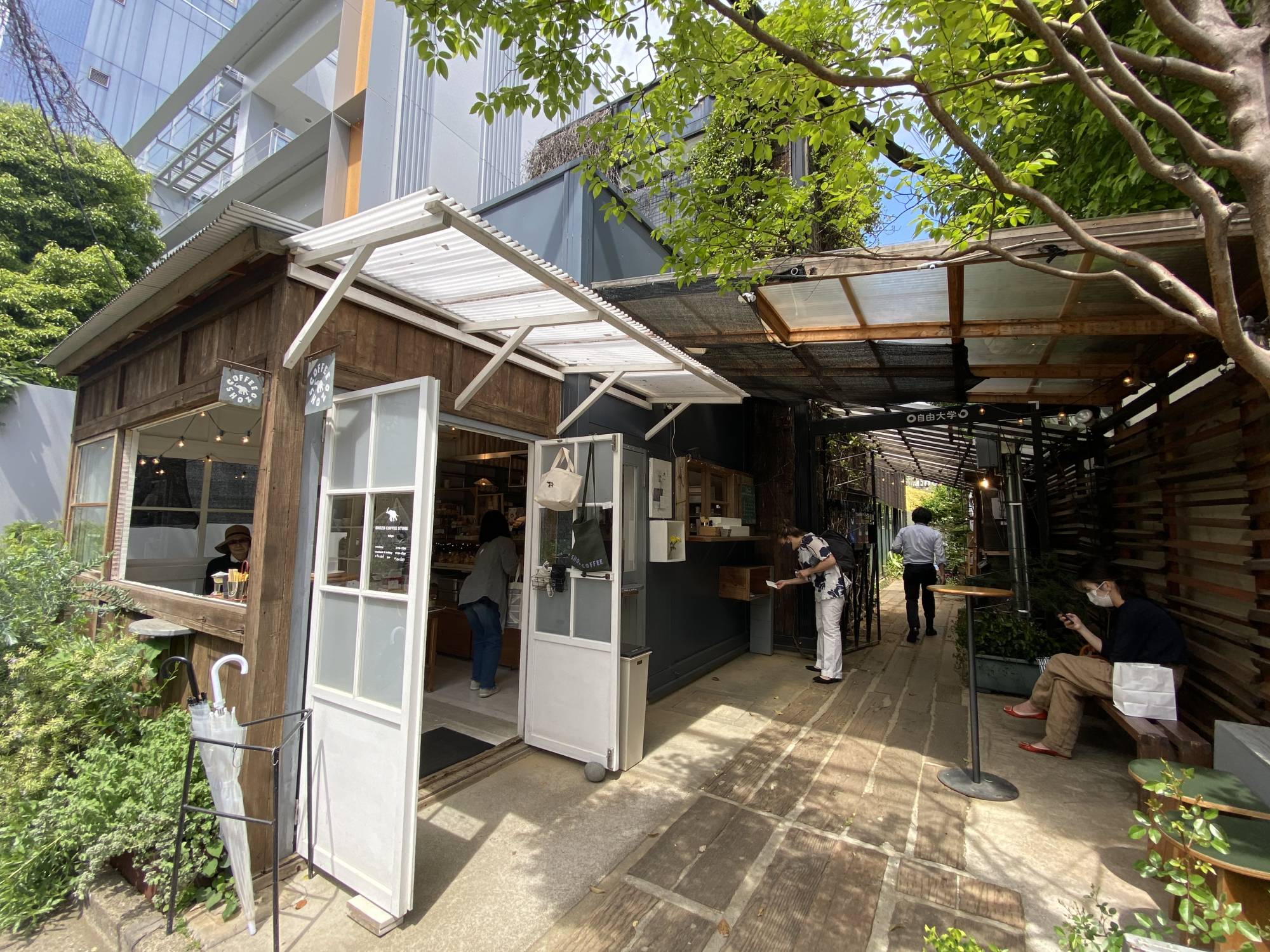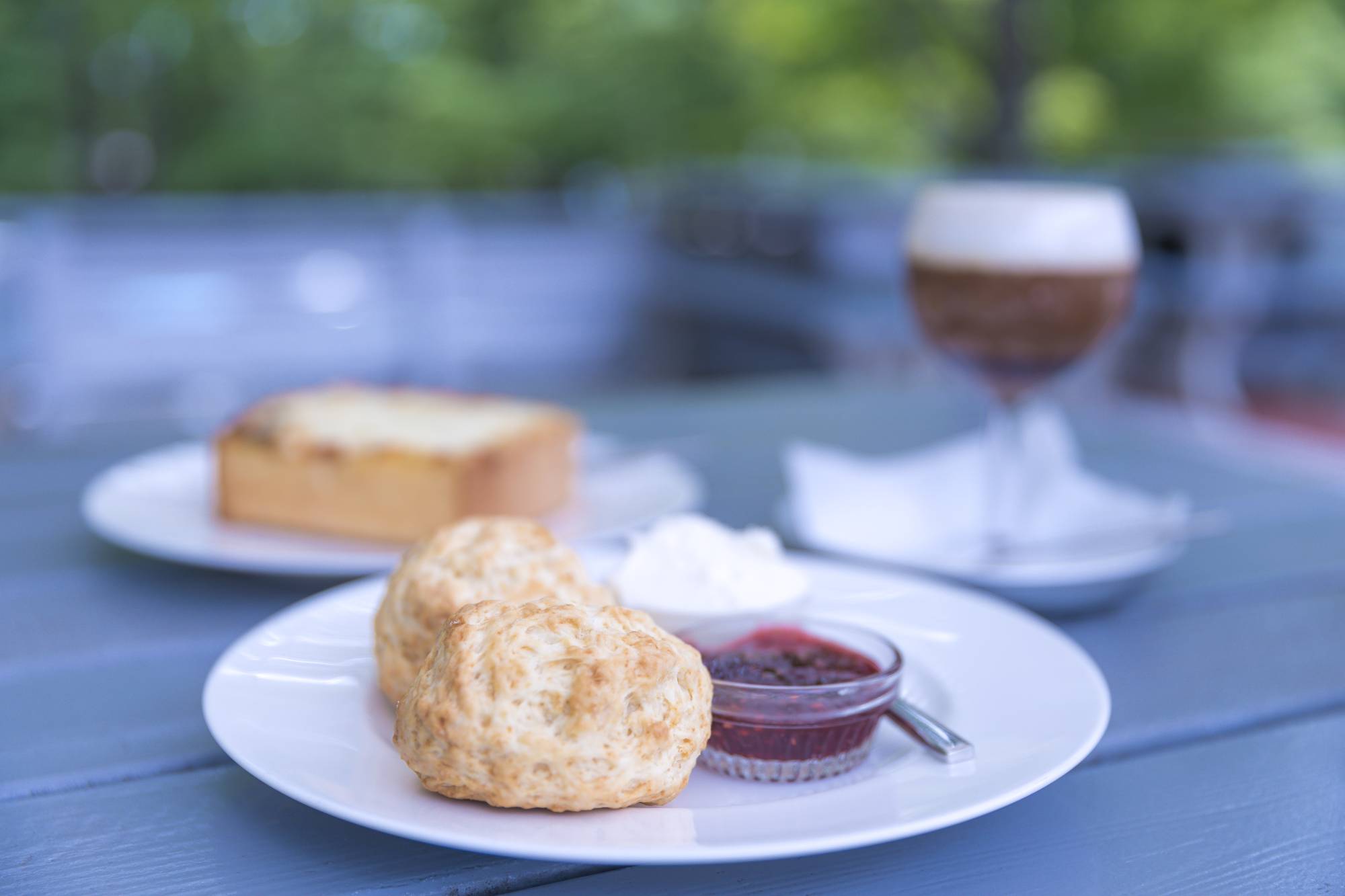Nasu, Tochigi Pref. – The town of Kuroiso in Tochigi Prefecture’s mountainous Nasu highlands, with its retro streets and relaxed vibe, might seem an unlikely candidate for one of the country’s top coffee culture destinations.
But the area has in fact been termed “sacred ground for cafe lovers,” thanks to Shozo Kikuchi — a man whom coffee aficionados have lauded as a quasi-god since his 1988 flagship cafe touched off a trend of stylish local development.
Kikuchi, who was born into a Kuroiso farming family in 1960, found his calling after navigating his way through a series of existential crises and synchronicities. His childhood fascination with the ocean had led him toward a stint in the Maritime Self-Defense Force, but he found afterward that he was still no closer to understanding his life’s purpose. Setting out in his early 20s to explore the country by motorcycle, he realized that one thing did ignite an unmistakable sense of joie de vivre inside of him: drinking coffee in atmospheric settings.
Deciding his goal would be to open his own cafe, Kikuchi moved to Tokyo and began working in a French-style cafe in Shimokitazawa. He learned to create patisserie fare such as cheesecake and scones, further refining the recipes back in his apartment. Finding his thoughts continually returning to Kuroiso, with all of the majestic nature the region had to offer, he realized he wanted to bring his vision back home.
Finding a centrally located building with an empty second floor, Kikuchi began putting his passions to work. Calling upon his frugal rural upbringing, he used whatever materials were on hand to slowly bring the space to life. The result was 1988 Cafe Shozo, named for the year it opened.
Meanwhile, the serendipitous experiences the young Kikuchi had while out on the road continued to deeply impact his evolving business on numerous levels.
“I had punctured a tire while in Otaru, Hokkaido, and a group of young guys took my motorcycle for repairs while I waited inside a cafe,” Kikuchi, who radiates a relaxed, warm energy, recounts. “The coffee there was incredibly delicious, and the shopkeeper explained to me that what really makes the difference in flavor is not the brewing: It’s the roasting.”
Kikuchi decided to master his roasting technique at Saito Coffee in Sapporo, where he continues to source his coffee beans to this day. At the same time, his encounters with people along the road opened him up to the power of community.

“When I started my cafe, I had a vision of people not only coming to enjoy a cup of coffee, but actually getting out of their cars and walking around,” he says. “I wanted to bring the town to life. And for that, one cafe was not enough.”
Adding an adjacent household goods shop and antique store, Kikuchi watched his vision take shape. He went on to open Nasu Shozo Cafe in 1994, which he designed to have a light, airy feel in contrast to the muted, almost Parisian atmosphere of 1988 Cafe Shozo. Lying at the foot of the Nasu mountain range, his second cafe also features shelves of artsy books and a sprawling terrace overlooking the lush forest surroundings.
“In each of my shops, I use all kinds of different materials to create a completely unique feeling,” Kikuchi says. “I try to conjure an experience that’s both everyday and out-of-the-ordinary, which requires a careful balancing act.”
Shozo feted the opening of the 1994 location with his first tour of overseas coffee culture, finding further inspiration from cafes in the San Francisco Bay Area, Portland and New York City. He discovered that he could greatly increase efficiency using a KitchenAid appliance, and expanded his menu to include scones with cream and jam — one of his most popular signature items today.
As more shops continued to open around 1988 Cafe Shozo, the road eventually came to be known as Shozo Street. Today, the area includes restaurants, cocktail bars, a vegan grocery store and a vinyl record shop specializing in soul and funk music. The town’s charming retro streetscape is infused with new life by more shopkeepers and artisans — some of whom are Kikuchi’s proteges — who have interpreted the cozy style and soulful feel of his cafes for their own shops.
At nearby antique shop Yoshida Shoten, former Shozo employee Takanori Yoshida restores old furniture and collects bamboo basketry from around the country.
“Shozo’s vision has really taken off here, at a nice, slow pace that is perfect for this town,” he says.
Next door to Kikuchi’s flagship space is Chus, an artfully designed guest house, cafe and market where proprietor Goichi Miyamoto explains that his goal is to encourage interactions between local producers and tourists. He also runs a shop in the nearby Nasu highlands, where he employs people with disabilities, and plans to create an outdoor park where tourists and locals can continue to mingle.
Directly across the street from 1988 Cafe Shozo is Cuore (Italian for “heart”), an intimate restaurant where solo act (and Michelin-star hopeful) Tsuyoshi Naoi evokes the flavors of Toscana through dishes such as velvety turnip soup, slow-roasted T-bone pork steaks and millefeuille-style lasagna. With a moody ambience created by lightbulbs crafted from mason jars, it’s an ideal spot to watch the sky transform from deep blue to charcoal as the lights of Kikuchi’s cafe flicker below.
Interestingly, Kikuchi’s cafes might not have expanded outside Tochigi Prefecture were it not for a twist of fate.



“The Nasu region was heavily affected by the 3/11 disaster,” he recalls. “I had to figure out how to employ my staff after we shut down operations, so we began selling at the Farmers Market @UNU. Two years later, I was invited to open my first Tokyo store.”
Kikuchi now has two shops in the Aoyama neighborhood. Both feature his distinctive aesthetic: an inviting weathered wood facade; boxed herb gardens; green foliage framing shelves of baked goods, coffee and lifestyle products bearing his trademark Shozo elephant logo.
Baskets of organic produce tucked alongside the shelves at his Aoyama location are regularly sent in from a local Kuroiso farm, which also has a stand at his flagship shop in Kuroiso.
“I love the thought that people in Tokyo can feel a little bit of rural Tochigi each time they enjoy our products,” Kikuchi says.
Taking his love for both coffee and nature even further afield, Kikuchi opened his newest shop, Shozo Shirakawa, located in Fukushima Prefecture alongside Nanko Park, in 2019.
“I’ve styled it as an espresso stand, and it’s a gorgeous spot to take your coffee and just sit quietly outside, particularly when the sun is glinting off the lake,” he says.
Meanwhile, not even the pandemic has put a dent in Kikuchi’s future grand plans. Once international travel becomes possible, he will head to Melbourne to explore its famous cafe culture and superior coffee roasting techniques. His current cafe complex also includes a furniture warehouse, which he intends to turn into his own coffee roastery.
“We have made this town into a place where dreams come true,” Kikuchi says, “and there are places like Kuroiso all over Japan. It is my hope that people will come here to find inspiration, and then return to their own communities and create something similar.”
For more information, visit www.shozo.co.jp.
In line with COVID-19 guidelines, the government is strongly requesting that residents and visitors exercise caution if they choose to visit bars, restaurants, music venues and other public spaces.
In a time of both misinformation and too much information, quality journalism is more crucial than ever.
By subscribing, you can help us get the story right.
SUBSCRIBE NOW


